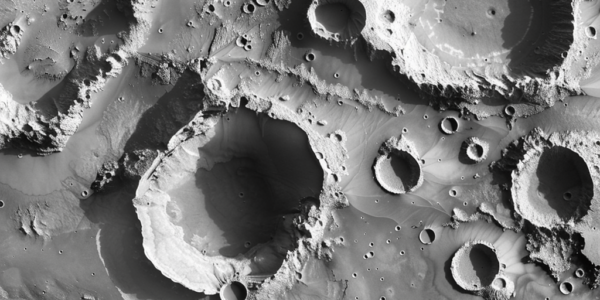Study Reveals High Prevalence of Little-Known Pesticide Chlormequat in Human Bodies
A recent study by the Environmental Working Group found high levels of the little-known pesticide chlormequat in the urine of 77 out of 96 individuals, raising concerns about its impact on human health. The study highlights the potential risks of chlormequat, which has been linked to reproductive and developmental issues in animal studies. With increased levels found in urine samples and regulatory changes allowing its use on imported oats and other foods, the need for rigorous monitoring and regulation of pesticides to safeguard public health is emphasized.
Delta flight forced to turn back after maggots fall from overhead cabin
A Delta flight from Amsterdam to Detroit was forced to turn back after maggots fell from the overhead cabin onto unsuspecting passengers. The incident occurred when a passenger boarded the flight with a suitcase containing rotting fish, which broke open during the flight, causing the maggots to fall onto the passengers in the economy class. Passengers affected by the incident were compensated with 8,000 air miles, hotel room compensation, and a $30 meal ticket if they were delayed overnight.
Wells Fargo Regains Regulatory Approval
Wells Fargo’s primary regulator lifts penalty related to 2016 fake accounts scandal, causing shares to surge. CEO Charlie Scharf calls it a ‘milestone’ for the bank, as the fallout from the scandal tarnished its reputation and led to the departure of two CEOs.
New Study Reveals Sustainable Method of Converting Waste Heat into Electricity Using Irish Wood Products
A new study by researchers at University of Limerick in Ireland has revealed a sustainable method of efficiently converting waste heat into electricity using Irish wood products, while minimizing costs and environmental impact. The study demonstrates a method of generating electricity using low-grade heat recovered from lignin-derived membranes, providing a significant advancement in developing sustainable heat-to-electricity applications. The research explores the use of ionic thermoelectric membranes made from lignin, offering a cost-effective and sustainable solution for converting waste heat into electricity.
12-Year-Old Canadian Student Proves Ancient ‘Death Ray’ Could Have Worked
12-year-old student from Ontario, Canada proves that Archimedes’ ‘death ray’ could have worked, shedding light on a long-standing historical debate. Using a scaled-down version of the weapon, Brenden Sener concluded that the concept is plausible and could have been used in battle, potentially changing the way we view ancient warfare.
Study Reveals Titan’s Subsurface Ocean Likely Non-Habitable
A study led by Western astrobiologist Catherine Neish has revealed that the subsurface ocean of Titan, the largest moon of Saturn, is most likely a non-habitable environment, reducing the likelihood of finding life in the outer solar system. Neish expressed disappointment at the findings, emphasizing the importance of water as a solvent for life. The study, published in the journal Astrobiology, quantified the amount of organic molecules that could have been transferred from Titan’s organic-rich surface to its subsurface ocean, using data from impact cratering.
Mars May Have Experienced Precursor to Plate Tectonics, Study Suggests
Recent study suggests Mars may have experienced precursor to plate tectonics, indicated by pervasive volcanoes and distinct rock types. Researchers focused on Eridania Basins in Mars’ southern hemisphere, identifying numerous volcanic features and high felsic materials. Findings offer valuable insights into early geological processes on Mars and provide comparative perspective on planetary evolution.
The Search for Extraterrestrial Life: Using Supernovae as a Focal Point
In the search for alien civilizations, researchers have proposed using bright galactic events like supernovae as a focal point for civilizations to announce their presence. SETI, dedicated to research and education, aims to drive exploration into the origins of life across the Universe. A recent paper reported an exciting development in the search for ET, using observations from the Transiting Exoplanet Survey Satellite (TESS) to monitor the SETI Ellipsoid. These findings open up new possibilities for exploring the existence of extraterrestrial life.
MIT Scientists Image Movement of Heat in Superfluid Quantum Gas for the First Time
MIT scientists have made a groundbreaking discovery in the world of superfluid quantum gas by successfully imaging the movement of heat in a wave, known as ‘second sound,’ through this exotic fluid for the first time ever. This achievement holds significant implications for the understanding of high-temperature superconductors and neutron stars, and opens up new avenues for research in materials science and astrophysics.
Scientists Explore Giant Space Parasol to Combat Climate Change
Scientists are exploring the potential of a gigantic space parasol to combat Climate change, as global warming accelerates. By blocking a mere 2 percent of the sun’s rays, Earth’s temperature could be reduced by a critical 1.5 degrees Celsius. This concept has evolved from speculation to serious scientific inquiry, with teams proposing various models and even planning to build a prototype. Critics argue the focus should remain on reducing emissions and removing atmospheric carbon dioxide, but proponents argue that every possible avenue must be explored to mitigate climate chaos. This sunshade wouldn’t replace the need for traditional climate action but could buy us time to implement sustainable solutions.










